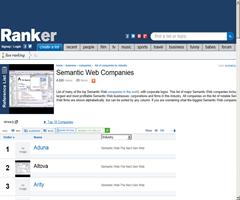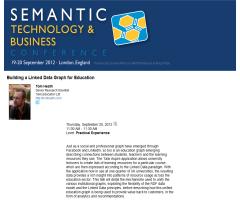Published by Pablo Hermoso de Mendoza González
18/12/2014
Texto escrito por: Rafael Berlanga, Oscar Romero, Alkis Simitsis, Victoria Nebot, Torben Bach Pedersen,Alberto Abelló. María José Aramburu. Los autores hacen un análisis de cómo las tecnologías asociadas a la Web Semántica están impactando en el ámbito de la inteligencia de negocio, en los productos denominados Business Intelligence. Resumen su artículo de esta forma: His chapter describes the convergence of two of the most influential technologies in the last decade, namely business intelligence (BI) and the Semantic Web (SW). Business intelligence is used by almost any enterprise to derive important business-critical knowledge from both internal and (increasingly) external data. When using external data, most often ...





